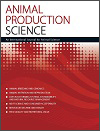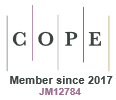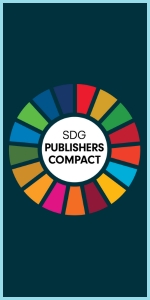Increasing heifer re-conception rates and increased annual liveweight gain present the best opportunity for maximising profitability in northern Australian beef cattle herds. A desktop analysis was undertaken to investigate the impact of weaner and yearling heifer supplementation on herd structure and gross margins. Break-even thresholds for supplementation were established for steer prices and supplement costs within the recent economic environment.

Animal Production Science
Volume 65 Number 3 2025
Goats are vital to improving livelihoods and food security, most notably in developing countries. Research and development programs play a pivotal role in enhancing livestock productivity globally, but were lacking for goats in Lao PDR. Our program consisted of regular farm visits, a mix of formal and informal training, and subsided or incentivised adoption of forage growing, veterinary treatments, mineral blocks, improved goat housing, and supplementary concentrate feeding - and achieved beneficial practice change and enhanced financial security for smallholder households.
This article belongs to the collection: Sustainable Animal Agriculture for Developing Countries 2023.
AN24343 Abstract | AN24343 Full Text | AN24343PDF (3.5 MB) Open Access Article
Determining the birth date of lambs is important for breeding lambs with superior growth. We used sheep-attached proximity sensors to measure the interactions between 300 ewes and three rams over the mating period to predict the date of lambing. We found that 80% of ewes had a predicted lambing date ±3 days of the measured lambing date. This tool can be used by farmers to improve the management of ewes by grouping them together by gestational age.
AN24331 Abstract | AN24331 Full Text | AN24331PDF (899 KB) Open Access Article
AN24368Reducing one third the dose of porcine follicle-stimulating hormone did not affect the in vivo embryo production in Santa Inês ewes
 , A. C. S. Ribeiro
, A. C. S. Ribeiro  , J. D. R. Santos, J. D. R. Santos, M. M. Guerrero-Gutiérrez, M. M. Guerrero-Gutiérrez, C. C. C. Cunha, C. C. C. Cunha, S. R. Silva, S. R. Silva, M. F. A. Balaro
, J. D. R. Santos, J. D. R. Santos, M. M. Guerrero-Gutiérrez, M. M. Guerrero-Gutiérrez, C. C. C. Cunha, C. C. C. Cunha, S. R. Silva, S. R. Silva, M. F. A. Balaro  , M. F. A. Balaro
, M. F. A. Balaro  , R. I. T. P. Batista, R. I. T. P. Batista, J. M. G. Souza-Fabjan
, R. I. T. P. Batista, R. I. T. P. Batista, J. M. G. Souza-Fabjan  , J. M. G. Souza-Fabjan
, J. M. G. Souza-Fabjan  , J. F. Fonseca, J. F. Fonseca, R. Ungerfeld
, J. F. Fonseca, J. F. Fonseca, R. Ungerfeld  , R. Ungerfeld
, R. Ungerfeld  , F. Z. Brandão
, F. Z. Brandão  and F. Z. Brandão
and F. Z. Brandão 
Superovulation is a major limitation in multiple ovulation and embryo transfer programs because of its high cost and variability in hormonal responses. This study compared the effects of two doses (333 IU or 500 IU) of porcine follicle-stimulating hormone on follicular growth, superovulatory response, and in vivo embryo production in Santa Inês ewes. Lower doses achieving similar results may reduce embryo production costs and promote the wider use of this reproductive biotechnology.



